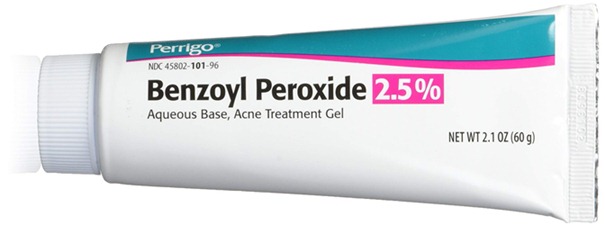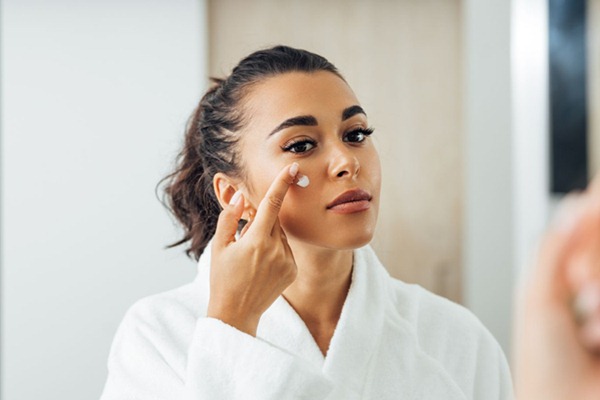Benzoyl peroxide is a commonly used over-the-counter (OTC) and prescription medication for treating acne. It’s an especially effective agent for reducing inflammation and killing acne-causing bacteria. But, like any potent skincare ingredient, knowing how long to leave it on your face is essential for achieving those blemish-free and clear results you desire. In this article, we’ll delve into the world of benzoyl peroxide and provide you with guidance on the ideal duration for leaving it on your face. Whether you’re a seasoned skincare aficionado or a beginner, understanding the proper application time is the key to harnessing the full potential of this acne-fighting powerhouse while avoiding unwanted side effects. So, let’s get started on the journey to acne-free and healthier skin.
Understanding Benzoyl Peroxide

Before diving into the recommended leave-on times for benzoyl peroxide, it’s crucial to understand how it works. Benzoyl peroxide comes in various concentrations, typically ranging from 2.5% to 10%. It works by introducing oxygen into the skin’s pores, which kills the bacteria responsible for acne. In addition to this, it helps to unclog pores, exfoliate dead skin cells, and reduce inflammation.
How Long Should You Leave Benzoyl Peroxide on Your Face
Leave-On Times for Benzoyl Peroxide:
2.5% to 5% Benzoyl Peroxide
- For milder concentrations (2.5% to 5%), you can leave benzoyl peroxide on your face. This can range from a couple hours during the day to overnight. However, the exact duration should depend on your skin’s sensitivity.
- It is recommended to start with shorter leave-on times and then gradually increase as your skin becomes accustomed to the product. This approach helps you gauge your skin’s tolerance.
10% Benzoyl Peroxide
- Benzoyl peroxide with a higher concentration, such as 10%, are more potent and may be more likely to cause skin irritation.
- Typically, it is advisable to leave 10% benzoyl peroxide on your face for a shorter duration, usually around ten to fifteen minutes.
- After this brief period, rinse your face with water to remove the product.
- Leaving a 10% benzoyl peroxide product on for a longer period can lead to excessive redness, dryness, and peeling.
How can I achieve long-lasting results with benzoyl peroxide for my face?
To achieve long-lasting results with benzoyl peroxide for your face, follow these tips:
- Start with a lower concentration (2.5% or 5%) to minimize irritation.
- Use a gentle moisturizer and cleanser to maintain skin balance.
- Apply benzoyl peroxide once daily, if tolerated, gradually increasing to twice daily.
- Be consistent with your skincare routine.
- Use sunscreen daily to protect your skin.
- See a dermatologist for personalized guidance and treatment adjustments.
Factors to Consider
1. Skin Type
- People with dry or sensitive skin should be especially cautious when using benzoyl peroxide.
- If you have dry skin, you might find that leaving it on for an long period exacerbates dryness. In such cases, a shorter leave-on time is advisable.
2. Skin Sensitivity
- Everyone’s skin is different, so it’s very important to pay attention to how your skin responds to benzoyl peroxide.
- If you experience excessive irritation, dryness, or redness, it’s a sign that you may be leaving it on for too long. In such cases, you should consider a lower concentration or reduce the leave-on time.
3. Product Formulation:
- The formulation of the benzoyl peroxide product can also effect how long you should leave it on. Some products are meant to be rinsed off after a certain time, while others are designed for leave-on application.
- Always follow the specific instructions provided with your product to ensure effective and safe use.
More
Can long-term use of benzoyl peroxide cause skin damage on the face?
Yes, long-term use of benzoyl peroxide can potentially cause skin damage on the face, including peeling, redness, dryness, and irritation.
What is the recommended concentration of benzoyl peroxide for facial use?
For facial use, the recommended concentration of benzoyl peroxide is typically 2.5% to 5% for most people.
Are there any alternatives to benzoyl peroxide for treating acne on the face?
Yes, alternatives to benzoyl peroxide for treating acne on the face include sulfur, alpha hydroxy acids (AHAs), salicylic acid, and prescription medications like topical antibiotics and retinoids.
How often should I apply benzoyl peroxide to my face for acne treatment?
Start with once daily, then gradually increase to twice daily if your skin tolerates it, but follow the product’s instructions and see a dermatologist if unsure.
Can benzoyl peroxide be used with other skincare products on the face?
Yes, benzoyl peroxide can be used with other skincare products, but it’s important to consult a dermatologist for specific guidance based on your skincare routine and follow product instructions.
Should I take breaks from using benzoyl peroxide gel on my face?
Taking breaks from using benzoyl peroxide gel on your face is generally not recommended or necessary.
Can I use benzoyl peroxide gel for an extended period on my face?
Yes, you can use benzoyl peroxide gel for an extended period on your face, but it’s important to follow the product’s instructions and see a dermatologist for long-term usage guidance.
Can I incorporate benzoyl peroxide cream into a long-term skincare routine for the face?
Yes, you can add benzoyl peroxide cream into a long-term skincare routine for the face, but it’s crucial to use it as directed and see a dermatologist for personalized advice.
Conclusion
When used correctly, benzoyl peroxide can be a highly effective treatment for acne. To determine how long you should leave benzoyl peroxide on your face, consider the concentration of the product, your skin type, and your skin’s tolerance. Starting with shorter leave-on times and gradually increasing as needed is a prudent approach to reduce the risk of skin irritation. If you have concerns about using benzoyl peroxide, see a dermatologist for personalized guidance on acne treatment.


